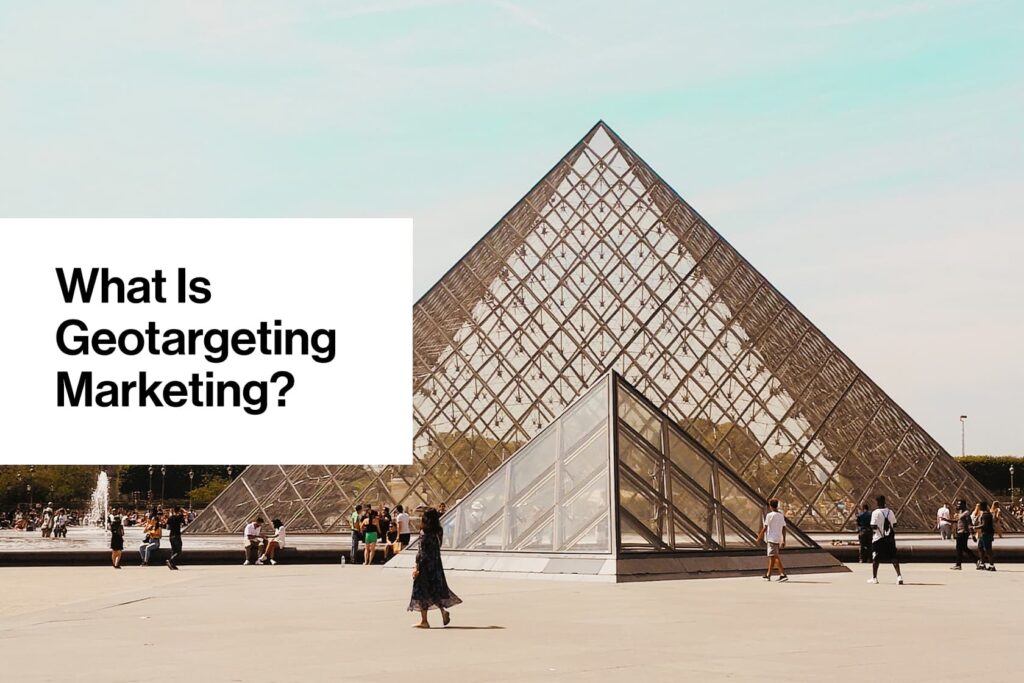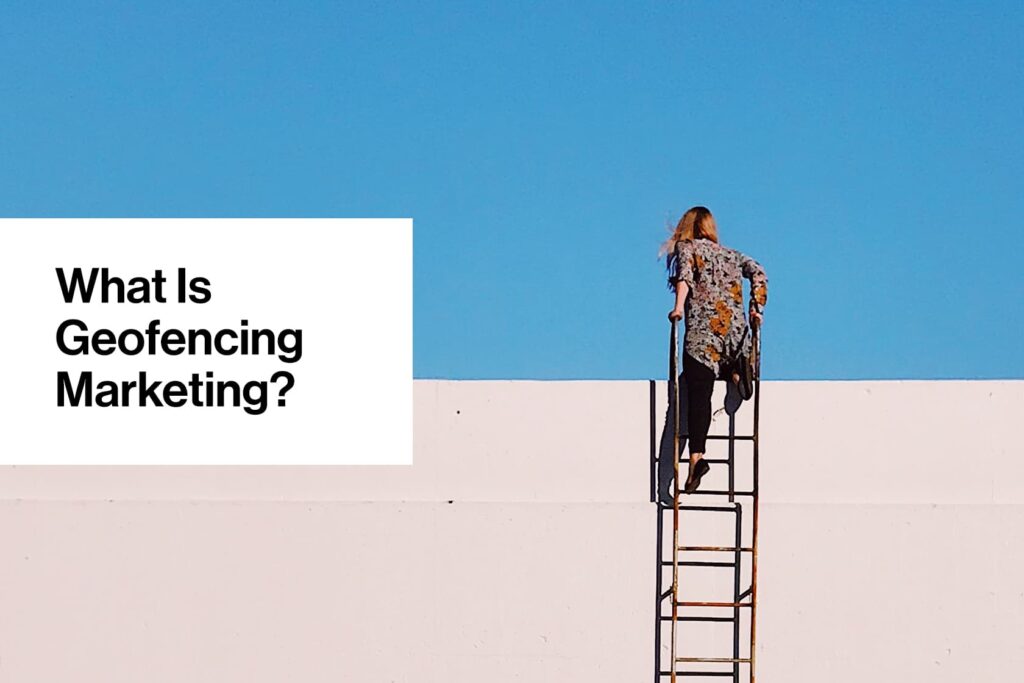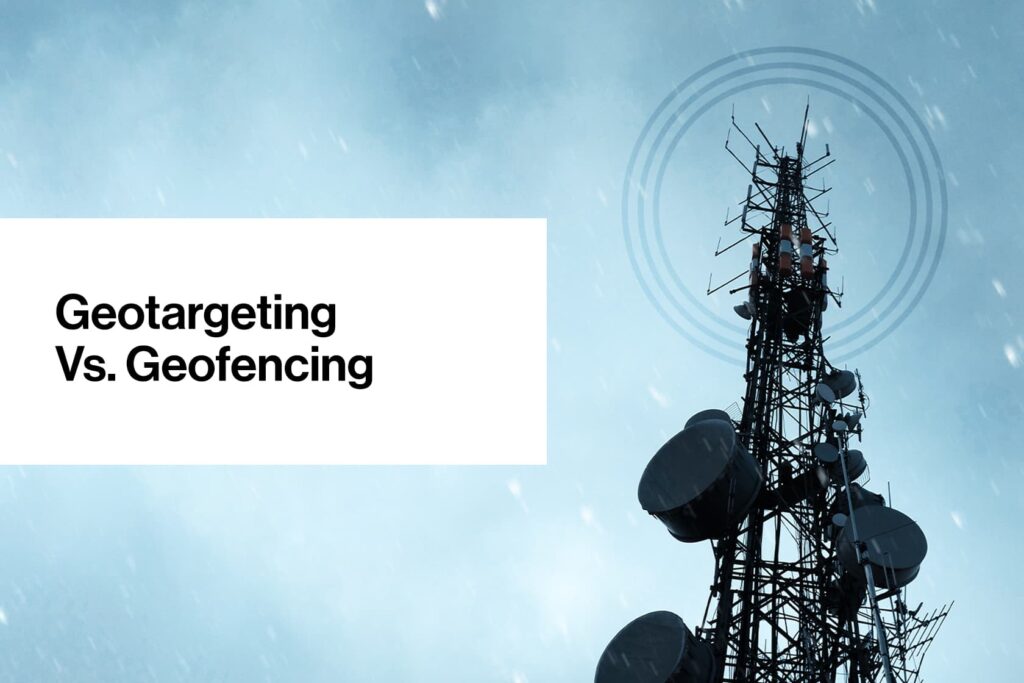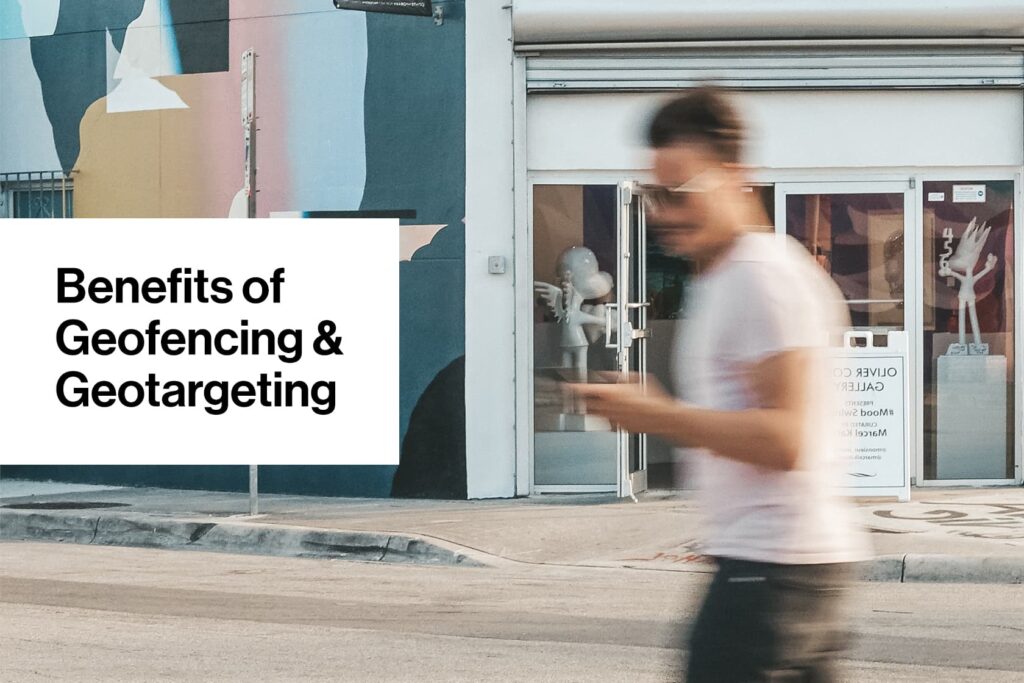Geofencing Advertising & Geotargeting Basics
Geotargeting and geofencing advertising are important to a marketing campaign for their use of location data. Geofencing ads address your target audience where they live, so to speak. For local businesses and national brands alike, understanding where your consumers are located and adjusting your messaging appropriately allows you to send them personalized, relevant content to help lead them further down the consumer funnel and drive them to your stores. Geofencing and geotargeting are two different digital programmatic marketing tactics that make this possible.
While the terms geofencing and geotargeting sound similar, they should not be used interchangeably. Let’s break down the similarities and differences between them, and how each strategy can be used to find and convert more customers.
Table of Contents:
- What Is Geotargeting Marketing?
- What Is Geofencing Marketing?
- Benefits of Geofencing and Geotargeting
- Geotargeting Marketing Strategies
- Geofencing Marketing Strategies

What Is Geotargeting Marketing?
Geotargeting offers the ability to deliver content to a user who fits a specific audience target based on their location. The location in geotargeting can be defined by zip code, city, state, or even as broad as a country. This tactic is used by virtually all types of digital marketing, and if you’re already running any digital advertising including social media advertising or PPC, you’re probably already using it.
Geotargeting is a smart way to reach audiences in specified areas. For example, if you serve a specific city or location, it makes sense to narrow down your targeting strategy accordingly. This step ensures that you’re using your resources wisely and delivering relevant information to people who can benefit from it the most. Learning to target your audience in the right place at the right time is an essential part of developing a geotargeting marketing strategy.

What Is Geofencing Marketing?
Geofencing refers to another method of serving ads to someone in a unique geographic location. Instead of just choosing the city, country, or DMA you want to include, geofencing relies on a virtual fence that is drawn around a certain area, such as a store or venue. When customers enter, they receive a specific message or offer. Geofencing parameters can be any size, but most are used to include a tight radius around a specific location, with a minimum radius of approximately 1 mile. There aren’t any other demographic or behavioral parameters outside of location to choose who your audience is, although you can choose to add other targeting attributes on top of your geofence.
A more specific type of geofencing advertising strategy is historical geofencing. Historical Geofencing is just what it sounds like — targeting a group of people who have previously visited a specific area. If a customer has visited a specific location in the past 400 days, you can serve them an ad. One of the most common use cases here would be conquesting, or gaining customers from your competitors. As an example, Moe’s Southwest Grill could choose to target anyone who has been to a Taco Bell or another specific competitive location in the recent past, and encourage them to visit Moe’s instead next time around. As the marketer, you could then determine the lift for an audience exposed to that messaging, compared to those not exposed to the campaign.

Geotargeting vs Geofencing
Both geofencing and geotargeting offer marketers the opportunity to drive engagement by sending relevant messages to consumers in a specific location. The location data that is used to power these tactics is gathered through a variety of technologies, including GPS or IP address. Both geo-fencing and geo-targeting can be done on mobile, tablet, computer, or even gaming devices with internet access.
How Does Geotargeting Marketing Work?
Why seek ad impressions and clicks from consumers who lack access to your products or services? Today’s advanced advertising options give you the freedom to reach out to audiences based on where they live. Many ad services on websites and social media platforms offer flexible geotargeting options, making it easy for you to target your desired consumers.
You may gather location data from consumers by having them enter information manually or by using their browser data. Some businesses use GPS and IP targeting to determine the approximate locations of their customers. If you use these methods, you can more easily find your customers and send them the appropriate ad content.
How Does Geofencing Advertising Work?
Geofencing advertising strategies are designed to make it easier for businesses to reach customers based on their physical locations. These strategies work thanks to the help of GPS technology that determines when a customer enters your set location parameters and triggers a specific action.
You can send messages, notifications, and ads to individuals who stop at or pass through your geofence. For example, if you want to draw attention to your business or an event in the area, this method is an excellent way to spread the word.
You can include customers in your geofencing campaign by using their contact information, sending notifications through your app or targeting individuals with specific keywords. One of the main benefits of geofencing advertising is its flexibility, providing you with a more advanced and relevant form of targeting.
Geofencing Use Cases
While geotargeting is common enough to be included in almost all digital marketing campaigns, geofencing is not quite as There are quite a few times that marketers might want to use geofencing, but here are some of the most common:
- Event Targeting: Target people who attended a certain event at a specific time. For example, this could work in a stadium, where a store or food stand targets people watching the game with a special coupon or promotion.
- Conquesting: Use promotions or price matching messaging to disrupt your competitor’s efforts, by targeting users who have visited a customer’s store to drive them to your store.
- Audience Targeting: Target people who work or live within a certain area, or even someone who is near a specific store, and entice them to come in and shop.
- Customer Loyalty: Target people who have already visited a particular store to promote seasonal items, sales or events, to help boost brand loyalty and drive return visits.

Benefits of Geofencing and Geotargeting
Geotargeting and geofencing offer a variety of unique benefits. If you’re unsure which strategy to add to your next marketing campaign, it’s important to understand what each option has to offer and how it can enhance your business.
Benefits of Geotargeting Marketing
Geotargeting can play a major role in helping you optimize your marketing campaign. Some of geotargeting’s advantages include:
- Personalization: By collecting data about your customers, including what type of offers appeal most to them or actually drive them to your store, you get a better understanding of the customer journey. If one particular product appeals more to a certain local population, you can adjust your promotions accordingly.
- Improved Budgeting: Narrowing down your audience as much as possible is integral to maintaining a strong marketing budget. With geotargeting, you can market to specific areas and focus on locations where certain products or services may be more popular with your customers. This specificity will allow you to budget both time and money more effectively.
- Local Reputation: Using geotargeting is an excellent opportunity to build a positive reputation as an industry leader within communities. By building relationships with consumers in your service areas, you can earn popularity and trust over time.
Benefits of Geofencing Marketing
Geofencing also offers its own unique set of benefits, including:
- Increased Engagement: Geofencing helps you keep consumers engaged and aware of opportunities with text and app alerts. Sending the right message at the right time is an essential part of the digital marketing process, and geofencing helps you ensure alerts stay relevant.
- Increased Analytics: Geofencing offers a number of metrics, including sales, how long buyers are in-store, and how frequently they visit your business.
- Enhanced Local Sales: Send push notifications to target customers in your area, change promotions, or offer limited-time offers to increase local sales.
Reaching your target audience is not always an easy task, but geotargeting and geofencing makes it easier to connect and engage with your ideal customers, wherever they are located. User-based marketing efforts are always more effective than mass communications.
Geotargeting Marketing Strategies
Businesses can use geotargeting marketing strategies to increase customer loyalty and keep people informed about current offerings. There are many ways to use geotargeting in your marketing campaign. For instance, you may send recommendation notifications to consumers to highlight products at their closest store.
Other strategies may include using location-specific pages on your website and advertising through multiple channels. Geotargeting is effective for desktop and mobile consumers alike, and it works on a wide variety of platforms.
Geofencing Marketing Strategies
The possibilities are nearly endless when you decide to implement geofencing as part of your marketing campaign. Some common strategies that businesses may use to capitalize on the benefits of geofencing advertising include:
- Requesting feedback while the customer interaction is still fresh.
- Using analytics to personalize the unique customer experience.
- Targeting people who have shown interest in certain products.
- Using a combination of text messages, website ads, and push notifications to connect with consumers.
- Using informative ads to help consumers find your location.
Some of the most relevant times to reach out to customers are when they’re passing by or looking up specific keywords near your business. Modern geofencing technology makes it easier for you to market to nearby individuals throughout the day.
FAQs
We’ll be glad to address any questions or concerns you have about geotargeting versus geofencing. Here are some of the most common types of questions business leaders often have, and their answers.
Can You Geofence Facebook Ads?
Yes, you can use geofencing with Facebook! Facebook offers an extensive range of advertising options, allowing you to set geofences and use keyword targeting to distribute ads. The process works similarly to other types of Facebook advertising.
Who Uses Geofencing?
Any business, large or small, can reap the benefits of geofencing advertising. If you’re looking to drive more people to your business or encourage them to contact you, geofencing can help improve the timing and relevance of ads. Timed advertising is a great option for local businesses that need to increase foot traffic.
How Are Geofencing Ads Served?
Geofencing ads can be delivered in various forms, including keyword ads, push notifications, and SMS messages. If your consumers have signed up to receive notifications from your business, location triggers represent a smart opportunity to send reminders and promote products. All you need to do is set the geofence, and customers will be able to see your ads when they enter the area.
How Do You Use Geotargeting in Marketing?
A business can use geotargeting by taking advantage of customer location data. Geotargeting marketing strategies allow you to narrow down your audience and reach the people who are most likely to buy your products. You can find geotargeting settings in most search engines and social media platforms.
AUDIENCEX powers effective omnichannel geotargeted marketing campaigns across programmatic DSPs, search, and social platforms. No matter where your audience is, we can help you reach them. Contact us to schedule a time to talk about your upcoming campaign goals and how we can help you achieve them.
Get the Guide: 5 Steps to Prepare for the Loss of Third-Party Cookies
In preparation for what’s to come, we’ve created a guide with 5 ways to plan your programmatic advertising strategy without the use of third-party cookies.
Fill out the form below to download the guide.

